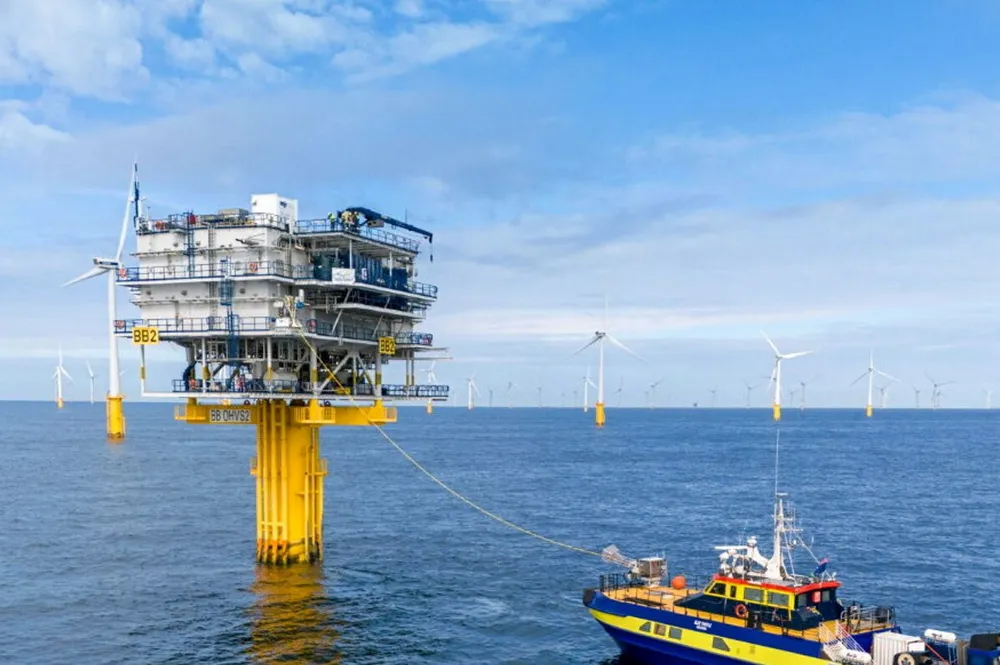Offshore wind farms could recharge vessels using new system trialled by Parkwind
Vessels represent a major portion of emissions by the offshore wind industry and a unit of JERA Nex has carried out trials on a streamlined new system

Parkwind, a Belgian offshore wind developer acquired by Japan’s JERA group in 2023, has installed and tested an offshore charging station designed to minimise greenhouse gas emissions from maintenance and transport vessels.
The infrastructure was deployed at Belgium's Nobelwind wind farm and was described as a crucial investment towards enabling low-carbon offshore transport operations as the recharging operation is powered by localised renewable energy sources.
The trial proved the system can transfer electricity to vessels safely without any disruption to production at the wind farm.
The technology, which was developed by UK-based MJR Power & Automation and was integrated and deployed in collaboration with Parkwind, allows ships to connect to the charging cable in offshore conditions.
Nobelwind is located 47 kilometres from shore in the Belgian North Sea and is Parkwind’s third offshore wind energy project with 50 turbines installed over 19.8 square kilometres.
"We are committed to making all of our activities as sustainable as possible and this is a game changer for our maintenance vessels, which can now access green energy direct from our wind turbines as they carry out their work,” stated Kristof Verlinden, Parkwind’s head of operation and maintenance.
The system is designed for battery-powered crew transfer vessel (CTV) charging up to 2MW and service operation vessel (SOV) charging up to 8MW, said Parkwind. It can also be used for powering other conventional offshore vessels on standby, reducing their emissions from diesel generators.
The system was transported to the offshore substation in modules and lifted using a substation crane. It was assembled, hooked up, and commissioned on the substation within two days.
The setup was tested by safely transferring power to a crew transfer vessel from a fully operational and producing offshore wind farm.
“The automatic coupling and uncoupling process and charge management have been extensively tested and found to be successful. With this progressive concept, Parkwind aims to strengthen its position as a pioneer in the offshore wind sector and strive for fully sustainable operations,” the company said in a statement.
MJR carried out electrical and mechanical interface engineering to install the system on the substation, while Parkwind provided offshore logistics, offshore installation, testing support and the electrical power interface.
The free-floating system includes hands-free connection and disconnection, tension control and catenary management and overload protection, automatic and manual emergency release and recovery and reconnection.
It doesn’t require moorings, seabed consenting, dynamic subsea umbilicals or specialist handling vessels for maintenance.
Paul Cairns, managing director of MJR, stressed that the project was part funded by The Offshore Wind Growth Partnership and with support from the UK Department of Transport in the Clean Maritime Demonstration Competition.
MJR said it plans to incorporate lessons learned from the trials into the first commercial offshore charging system scheduled for delivery in the first quarter of 2025.
Parkwind forms part of a new dedicated renewables unit called JERA Nex, which was launched earlier this year.
JERA, Japan's largest power producer, said JERA Nex will aim to develop 20GW of renewables by 2035, investing in, owning and operating assets spanning onshore and offshore wind, solar and storage.
(Copyright)